|
Land snail family Cyclophoridae in northeastern Thailand, diversity and chromosomal investigations B. Kongim1, F. Naggs3 & S. Panha2 1Department of Biology, Faculty of Science, Mahasarakham University, Kantharawichai District, Maha Sarakham 44150, Thailand. kong...@yahoo.com 2Animal Systematics Research Unit, Department of Biology, Faculty of Science, Chulalongkorn University, Bangkok10330, Thailand 3Department of Zoology, The Natural History Museum, London SW7 5BD, United Kingdom.
The Cyclophoridae are dioecious, terrestrial, operculate land snails and one of the most species-rich families. We have attempted to clarify species diversity by a cytogenetic study. However, classical techniques are still necessary for example shell and radula morphology, as well as genital characteristics. Five genera and nine species from northeastern Thailand were identified as follows; Cyclophorus fulguratus fulguratus, Cyclophorus fulguratus ssp.1, C. orthostylus, C. saturnus, Cyclotus solutus, Micraulax coeloconus, Platyrhaphe sordida, Rhiostoma housei and Rhiostoma sp. They have the same haploid and diploid chromosome numbers n = 14, 2n = 28. However, the fundamental chromosome number (FN) and karyotype formulae contain unique representatives of the total summed combination of chromosome types. A ZZ-ZW sex determination system is confirmed for this family. [Poster Presentation]
What are Skeneimorph gastropods? How 3D-based anatomy can help to shed some light on the polyphyletic assemblage called Skeneidae Thomas Kunze & Gerhard Haszprunar Department Biology I, Ludwig-Maximilians-Universitat Munchen, BioZentrum Martinsried, Grosshaderner Str. 2, D-82152 Planegg-Martinsried, Germany Kun...@bio.lmu.de |
|
Molluscan Forum 2008 cont.
|

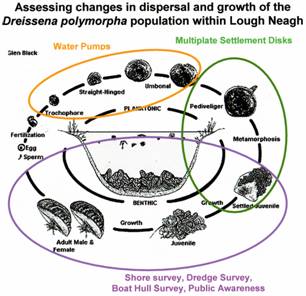
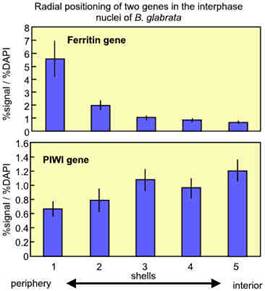
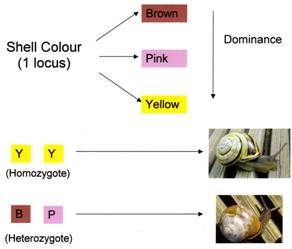
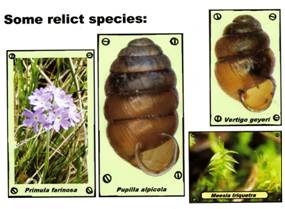
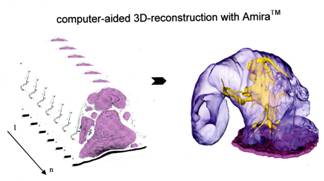
|
Until recently the classification of the members of the Skeneidae, type species Skenea serpuloides (Montagu, 1808), has been solely based on shell characters, radula details and external morphology. Accordingly, this vetigastropod group is suspected to represent a polyphyletic, skeneimorph assemblage. Recent methodological progress including serial semi-thin sectioning combined with computer-aided 3D-reconstruction enables the detailed anatomical investigation of such small (max. 3 mm), helicoid gastropods. True Skeneidae (exemplified by Skenea serpuloides) doubtless |
|
belong to the Vetigastropoda and rest in the Turbinidae. Apomorphies of Skenea and related genera include a penis formed by the right propodium. All other species examined so far do not belong to the Skeneid family: Ventsia tricarinata Warn & Bouchet, 1993 and Xyloskenea costulifera Marshall, 1988 rest in the Seguenzioidea, and Bathyxylophila excelsa Marshall, 1988 in the Scissurellidea. It is likely that microanatomical studies on the more than 40 remaining skeneimorph genera will greatly influence our understanding of the evolution of Vetigastropoda and related gastropod clades.
Treeless calcareous fens in the Western Carpathians: present state and changes through time - preliminary results Adam Lacina, Michal Horsák & Rashmi Chandran University of Nemocnic,e 86/2 Da ice, 38001 Czech Republic - adm...@seznam.cz |
|
Calcareous fens are widespread in the Western Carpathians. Although they are species-rich, their species composition is very stable over an extensive area. However, the historical development of these sites is completely different and is mirrored in the occurrence of some index species. There are three types of fens, which differ in their historical development. The first type comprises old treeless sites which originated as treeless fens in the Late Glacial period. Recently they support species considered as “glacial relicts”. Another type Includes younger fens, which also started as open sites but became fens due to deforestation during the Middle Ages or later. They are small-sized and usually support typical forest species, which penetrate the fens from forest surroundings. The last type includes fens with similar malacofaunas as the second type but which are much older. The latter originated as forest fens in the mid-Holocene or later and were deforested in the Middle Ages. |
|
Growth and reproduction of the common whelk Buccinum umdatum L. in Breiđafjörđur Hildur Magnúsdóttir1,2 Karen Olsen1 & Erla Björk Örnólfsdóttir1 1Vör - Marine Research Center at Breiđafjörđur, Norđurtangi, 355 Ólafsvík, Iceland. 2Department of biology, University of Iceland, Askja, Sturlugata 7, 101 Reykjavík, Iceland. hil...@sjavarrannsoknir.is |
|
The common whelk (Buccinum undatum) is found across the North Atlantic from Spain to Maine. The species is fished for bait and human consumption in Europe and Canada. In Iceland, the common whelk has been harvested in Breiđafjörđur for over 10 years. The goal of this study is to investigate the growth and reproductive cycle of the common whelk in Breiđafjörđur in order to facilitate sustainable fishery of the whelk. The life history traits to be determined are: time of mating, the time of egg laying, size at sexual maturity, growth rate and population structure. Whelks were collected monthly at ten stations in five areas in Breiđafjörđur and 75 snails from each station were measured and dissected. Sample collection was started in June 2007 and will continue throughout 2008. Preliminary results of the biology of the common whelk in Breiđafjörđur will be presented and discussed.
Early colonization of the Zebra Mussel (Dreissena polymorpha) in Lough Neagh: ecological and consequential socio-economic impacts for the rural eel fishing industry Sarah MCLean Aquatic Ecosystems Branch, QUB, Newforge Lane, Belfast, BT95PX, N.I. smcl...@qub.ac.uk |
|
The observation of 5 adult D. polymorpha on the hull of a boat moored in Kinnego Marina, Lough Neagh in 2005 initiated a preliminary investigation to assess whether zebra mussels were present throughout the Lough. The investigation found 44 settled juveniles on debris from 20 sites. No adults were observed and no plankton sampling was carried out. In October 2006 plankton tows, spat collection and shoreline surveys were carried out. Veliger larvae were at densities of 0.0211 veligers per m3. Spat collectors showed settlement at a mean density of 523.76 juveniles per m2. No adult zebra mussels were found on natural substratum. 24 adult zebra mussels were found on a boat hull. These adults ranged in size from 7.5 to 24 mm. Since October 2007, spread has been monitored at all stages of the life cycle using plankton pumps, larval settlement disks, dredging, shore survey and boat hull surveys. |
|
To determine potential impacts of an invasion on the eel, stomach content analysis was carried out on eels caught during the commercial fishing season (May-October. Eels were sampled at Lough Neagh fishery Toomebridge. This work builds on survey work ongoing since 1998 and provides scope for observation of dietary preferences over time. Results indicate a breeding population of D. polymorpha exists in Lough Neagh and potential exists for ecosystem changes which may have impacts on the European eel.
Genomic analysis of the fresh water mollusc Biomphalaria glabrata to understand host:parasite interactions Edwin Odoemelam1, Andre Miller2, Matty Knight2& Joanna M. Bridger1 1Laboratory of Nuclear and Genomic Health, Centre for Cell and Chromosome Biology, Biosciences, School of Health Sciences and Social Care, Brunel University, West London UB8 3PH, U.K. Edwi...@brunel.ac.uk 2Biomedical Research Institute, 12111 Parklawn Dr, Rockville MD20852, U.S.A. |
|
The fresh water snail Biomphalaria glabrata is the intermediate host for the platyhelminth parasite Schistosoma mansoni. In humans this parasite is responsible for the disease of schistosomiasis. The snail’s genome has been chosen to be sequenced at the genome sequencing center in Washington. One hypothesis is that the schistosome parasite is able to manipulate the snail genome in order to facilitate the snails permissibility to invasion and inhabitation by the parasite. Such manipulations may involve epigenetic modifications to chromatin and/or genome behaviour.We have been using assays to examine B. glabrata chromatin modification and genome behaviour, pre- and post-infection. These studies employ the only immortalised cell line derived from snails and ex vivo tissue from whole snails. The assays have revealed changes in histone modifications using antibodies, gene positioning in interphase nuclei, chromosome organisation as revealed by incorporation of labelled nucleotides and distribution of repetitive chromatin. |
|
The use of molluscs to indicate the impact of cattle grazing on fens in Co. Clare and Galway, West Ireland Lorna O’Mahoney, John O’Halloran & Simon Harrison Zoology, Ecology and Plant Science Department, University College Cork, Cooperage Building, Distillery Fields, North Mall, Cork, Ireland. Lorn...@mars.ucc.ie Cattle grazing has been seen to have a dramatic effect on biodiversity and species abundance within grassland and wetland habitats. Most studies in this area have focused on vegetation and a range of invertebrate species. The aim of this study is to ascertain whether cattle grazing has an impact on molluscan and vegetative diversity in six fens of County Clare and Galway in the west of Ireland. Molluscan sampling. Two seasons were completed consisting of 20 min in situ counts and twenty 25x25 cm plots (10 grazed, 10 under grazed) in each of the six sites. A vegetative survey was conducted in mid summer. Soil type and water chemistry were also observed. Information on grazing pressure and land use history was achieved with the use of a Farmers’ Survey. Preliminary interpretations of results indicate that grazing has no significant impact on vegetation or molluscs within the ecosystem of chosen fens. |
|
This study is part of the BioChange programme which aims to develop skills, a greater understanding and ability to save biodiversity in the west of Ireland by the year 2010. [Poster Presentation]
The use of AFLP markers to detect selection in the land snail, Cepaea nemoralis Simit Patel School of Biological Sciences, Philip Lyle Building, University of Reading, Whiteknights, PO Box68, Reading, RG6 6BX, UK s.pa...@reading.ac.uk. The terrestrial snail Cepaea nemoralis is highly polymorphic in directly observable shell characters. The underlying genetics of these shell characters is simple, facilitating the demonstration of |
|
local adaptation and disruptive selection at individual loci. Morph frequency data has revealed that particular shell morphs are more prevalent in particular habitats. At some sites in the UK, such population divergence occurs over short distances, in the order of a few hundred metres. This means that such divergent populations of C. nemoralis have great potential as natural model systems to study local adaptation. However, there is a lack of molecular data to support the morph frequency data. A genome-wide scan with amplified fragment length polymorphism (AFLP) markers should reveal loci that are highly differentiated between divergent populations of C. nemoralis. Highly differentiated loci are indicative of regions of the genome under selection. This technique can help to find the gene(s) involved in local adaptation.
Genetic variations in the elephant snail, Pollicaria myersii (Prosobranchia: Pupinid) in Thailand Pongpun Prasankok1, Ng Beewah2, Norhanis Mohammad Razalli2, Fred Naggs3 & Somsak Panha4 1Department of Biology, Faculty of Science, SrinakharinwirotUniversity, Bangkok10110, Thailand. pras...@yahoo.com 2Centre for Marine and Coastal Studies, Universiti Sains Malaysia, 11800 Pulau Penang, Malaysia. beew...@yahoo.com norh...@gmail.com 3Department of Zoology, The Natural History Museum, London SW7 5BD, UK. F.Na...@nhm.ac.uk 4Animal Systematics Research Unit, Department of Biology, Faculty of Science, Chulalongkorn University, Bangkok10330, Thailand. soms...@sc.chula.ac.th
The land operculate snail genus Pollicaria Gould, 1856, known as the elephant snail, is endemic to threatened limestone outcrops of Southeast Asia. Allozyme variation in Pollicaria myersii was examined across geographical locations in Thailand. Using horizontal starch gel electrophoresis, 19 presumed allozyme loci (11 polymorphic) from 12 enzyme systems were screened. Heterozygosity was moderately low (Hexp = 0.000-0.102, mean = 0.030). Two populations of P. myersii (Tham Phabing and Tham Phapu) were monomorphic for all 19 examined loci in contrast to the other four populations, suggesting bottlenecks within these populations. Populations were more differentiated in the P. myersii (FST = 0.874) indicating this may have been involved in an extensive local fragmentation. Pollicaria myersii exhibited fixed allele differences, a high genetic distance, and a potential polyphyletic relationship, suggesting two distinct lineages (species). [Poster Presentation]
|